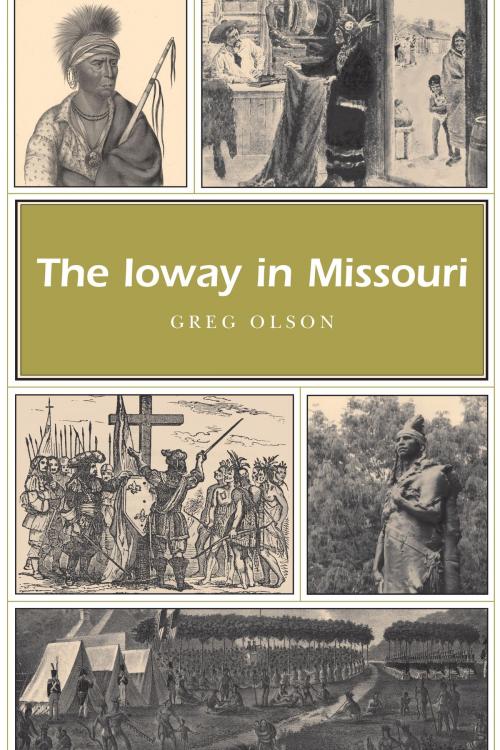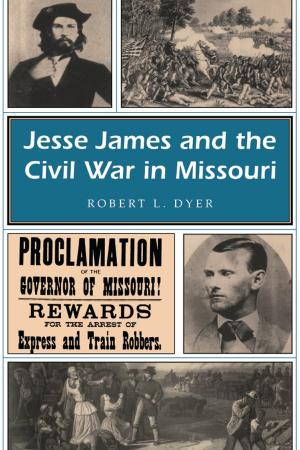The Ioway in Missouri
Nonfiction, Social & Cultural Studies, Social Science, Cultural Studies, Native American Studies, History, Americas, Native American| Author: | Greg Olson | ISBN: | 9780826266613 |
| Publisher: | University of Missouri Press | Publication: | October 20, 2008 |
| Imprint: | University of Missouri | Language: | English |
| Author: | Greg Olson |
| ISBN: | 9780826266613 |
| Publisher: | University of Missouri Press |
| Publication: | October 20, 2008 |
| Imprint: | University of Missouri |
| Language: | English |
Although their ancestors came from the Great Lakes region and they now live in several midwestern states, the Ioway (Baxoje) people claim a rich history in Missouri dating back to the eighteenth century. Living alongside white settlers while retaining their traditional way of life, the tribe eventually had to make difficult choices in order to survive—choices that included unlikely alliances, resistance, and even violence.
This is the first book on the Ioway to appear in thirty years and the first to focus on their role in Missouri’s colonial and early statehood periods. Greg Olson tells how the Ioway were attracted to the rich land between the Mississippi and Missouri rivers as a place in which they could peacefully reside. But it was here that they ended up facing the greatest challenges to their survival as a people, with leaders like White Cloud and Great Walker rising to meet those demands.
Olson draws on interviews with contemporary tribal members to convey an understanding of Ioway beliefs, practices, and history, and he incorporates reports of Indian agents and speeches of past Ioway leaders to illuminate the changes that took place in the tribe’s traditional ways of life. He tells of their oral traditions and creation stories, their farming and hunting practices, and their alliances with neighboring Indians, incoming settlers, and the U.S. government. In describing these alliances, he shows that the Ioway did not always agree among themselves on the direction they should take as they navigated the crosscurrents of a changing world, and that the attempts of some Ioway leaders to adapt to white society did not prevent the tribe’s descent into poverty and despair or their ultimate removal from their lands.
As modern Ioway in Kansas and Oklahoma work to recover the history of their people—and as local historians recognize their important place in Missouri history—Olson’s book offers a balanced account of the profound effects on the Ioway of other tribes, explorers, and settlers who began to move into their homelands after the Louisiana Purchase. Written for a general audience, it is a useful, accessible introduction to the changing fortunes of the Ioway people in the era of exploration, colonialism, and early statehood.
Although their ancestors came from the Great Lakes region and they now live in several midwestern states, the Ioway (Baxoje) people claim a rich history in Missouri dating back to the eighteenth century. Living alongside white settlers while retaining their traditional way of life, the tribe eventually had to make difficult choices in order to survive—choices that included unlikely alliances, resistance, and even violence.
This is the first book on the Ioway to appear in thirty years and the first to focus on their role in Missouri’s colonial and early statehood periods. Greg Olson tells how the Ioway were attracted to the rich land between the Mississippi and Missouri rivers as a place in which they could peacefully reside. But it was here that they ended up facing the greatest challenges to their survival as a people, with leaders like White Cloud and Great Walker rising to meet those demands.
Olson draws on interviews with contemporary tribal members to convey an understanding of Ioway beliefs, practices, and history, and he incorporates reports of Indian agents and speeches of past Ioway leaders to illuminate the changes that took place in the tribe’s traditional ways of life. He tells of their oral traditions and creation stories, their farming and hunting practices, and their alliances with neighboring Indians, incoming settlers, and the U.S. government. In describing these alliances, he shows that the Ioway did not always agree among themselves on the direction they should take as they navigated the crosscurrents of a changing world, and that the attempts of some Ioway leaders to adapt to white society did not prevent the tribe’s descent into poverty and despair or their ultimate removal from their lands.
As modern Ioway in Kansas and Oklahoma work to recover the history of their people—and as local historians recognize their important place in Missouri history—Olson’s book offers a balanced account of the profound effects on the Ioway of other tribes, explorers, and settlers who began to move into their homelands after the Louisiana Purchase. Written for a general audience, it is a useful, accessible introduction to the changing fortunes of the Ioway people in the era of exploration, colonialism, and early statehood.















